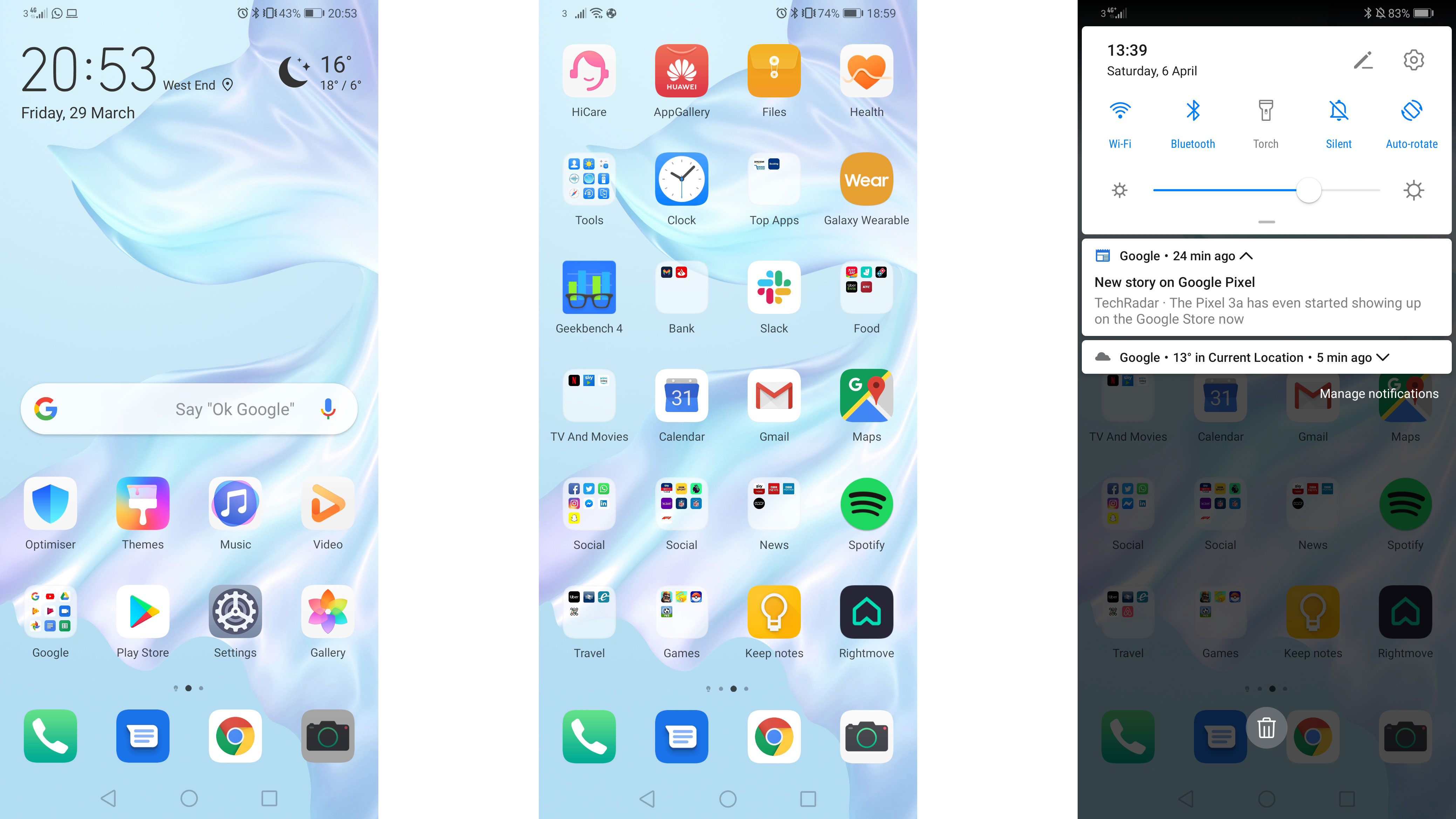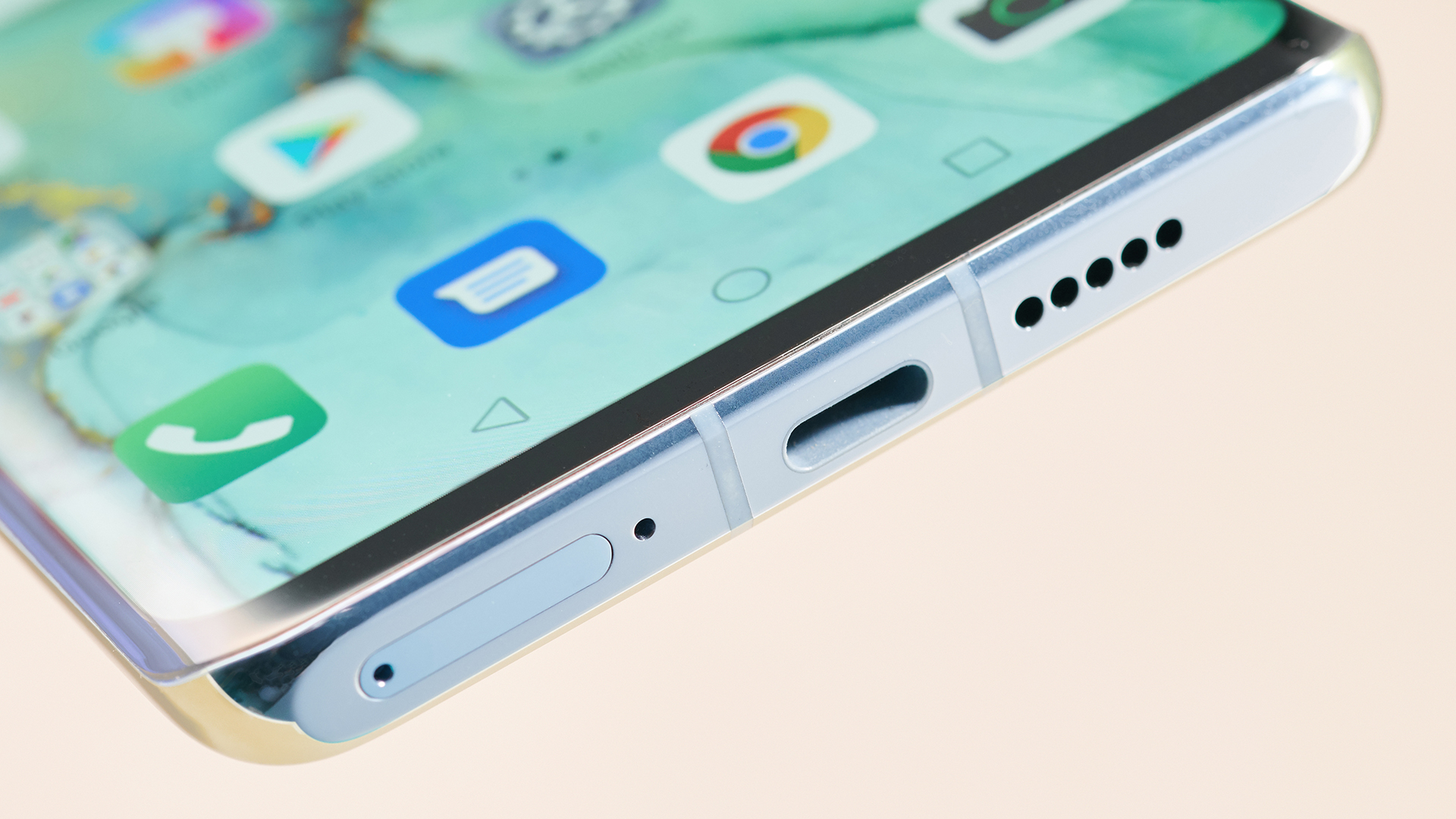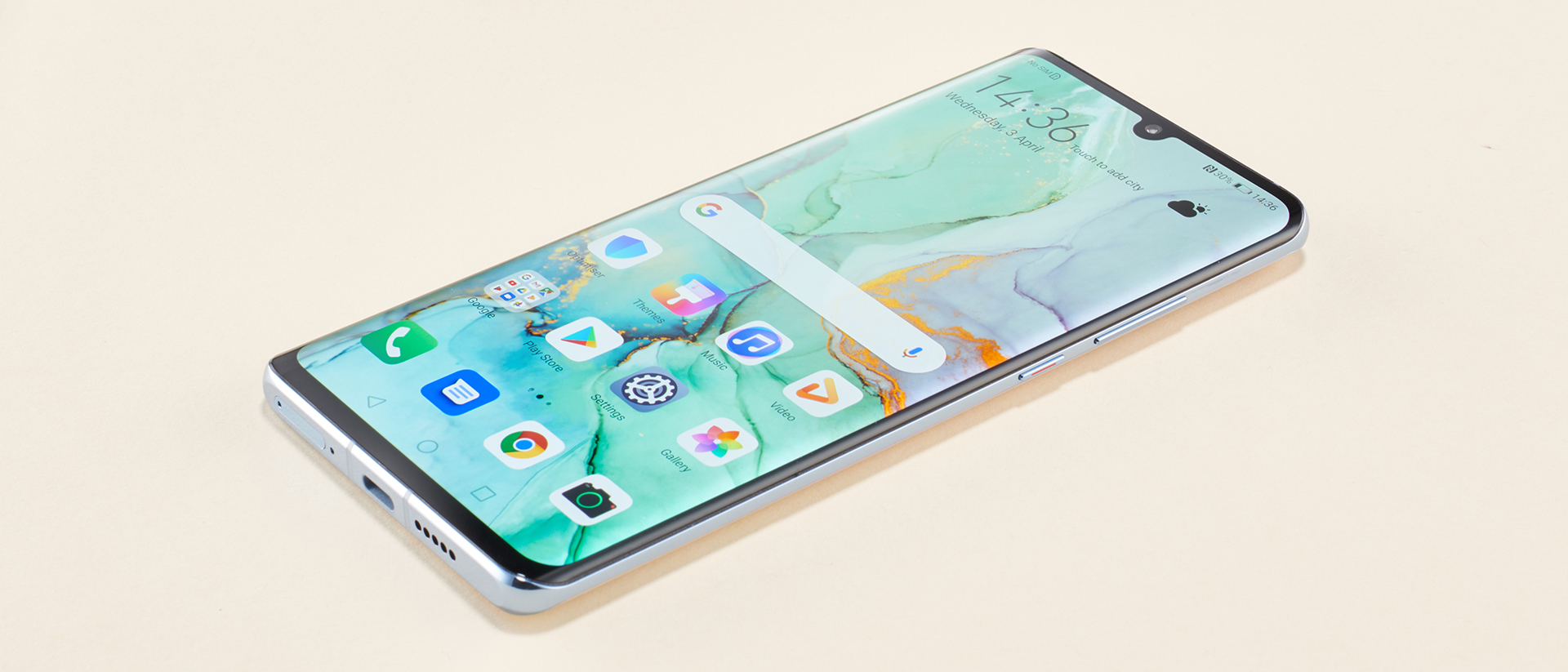Why you can trust TechRadar
Interface
The Huawei P30 Pro has Google’s Android 9 Pie operating system at its heart, but it’s coated in the firm’s EMUI interface, which is still a hit or miss offering.
EMUI removes the app drawer as standard (you can enable it in the settings), displaying all your app icons across home screens (like iOS on iPhone), and changes the theme to a more pop-arty look which we feel lacks the polish and class of stock Android.
There’s no doubt that EMUI has fans, but for us it’s not as slick as Google’s stock OS, or lighter skins from other manufacturers.
There’s a theme store app installed on the handset, allowing you to download a variety of free and paid-for themes to change the look of your home screens.

While the P30 Pro comes with Google’s suite of apps installed, Huawei has seen fit to also pre-install a selection of its own apps, some of which duplicate what’s offered by Google.
There are browser, email, app store, music and video apps from Huawei, but we’ve found that Google’s versions of these are easier to use, run smoother and look better. There’s no way to uninstall the Huawei apps either – we resorted to hiding them all in a folder on the home screen.
EMUI does have its advantages though, with various customization controls on offer if you venture into the depths of the settings menus. One feature we particularly liked was the always-on display, which shows you the time, date, battery status and notification icons when the phone is locked and the screen off.
It made checking those things as easy as simply glancing at the phone, and unlike some always-on displays it didn’t appear to have a negative impact on battery life.
Movies, music and gaming
As the Huawei P30 Pro is a flagship phone, it’s no surprise to find that it excels when it comes to media consumption.
It may ‘only’ have a Full HD+ display, but video still looks great on it, and the large screen provides plenty of real estate for your Netflix binges. Colors aren’t quite as vibrant, and detail (or extremely close inspection) not as fine, as on Samsung’s Super AMOLED panels, but you’ll probably not notice.
The single, down-firing speaker is a shame though, as it’s easily muffled when holding the phone in landscape, and doesn’t provide a stereo sound experience; and while it’s loud enough to fill a room with music, audio lacks clarity at higher volumes.
Gaming is a fluid experience, with short load times and graphics able to be cranked up to the maximum for ultimate clarity. Low-impact games such as Paper.io 2 and FC Pro felt slick under the finger, while more intensive titles, including Pokemon Go and Clash Royale also ran well.
For gamers wanting to push the P30 Pro further, it also handles big titles such as Fortnite, Real Racing 3 and PUBG well, with an improved heat pipe and vapor cooling chamber inside the handset preventing it from getting too hot during intensive sessions.

Performance and specs
The Huawei P30 Pro packs in a Kirin 980 chipset and 8GB of RAM, giving the handset plenty of grunt under the hood.
This means the P30 Pro is capable of handling any app you throw at it, with swift load times and the ability to render graphically demanding games such as PUBG (PlayerUnknown’s Battleground) on the highest settings without skipping a beat.
We ran Geekbench 4 a number of times, and the P30 Pro averaged a multi-core score of 9,669. That’s not as high as the Samsung Galaxy S10 Plus, which managed 11,002, but it’s still a respectable score for a flagship device.
In short, the P30 Pro may not perform to quite the same levels as the new Samsung, but you’d be unlikely to notice much difference if you ran the two phones side by side.
Depending on where you are in the world, the P30 Pro comes in 128GB, 256GB and 512GB variants. The 128GB model is the most affordable, and for most offers more than enough storage – and as we’ve mentioned there’s also support for the new nanoSD card format if you want to expand on the internal space.
If you inspect the front of the Huawei P30 Pro closely you’ll notice there isn’t an earpiece speaker for calls. That’s because Huawei has built the speaker into the screen of the handset, so putting your ear to the top portion of the display will provide you with audio for calls.
We found this resonating speaker to be a little quieter than a traditional speaker, but we were still able to clearly hear the person on the other end of the line most of the time.

TechRadar's former Global Managing Editor, John has been a technology journalist for more than a decade, and over the years has built up a vast knowledge of the tech industry. He’s interviewed CEOs from some of the world’s biggest tech firms, visited their HQs, and appeared on live TV and radio, including Sky News, BBC News, BBC World News, Al Jazeera, LBC, and BBC Radio 4.
